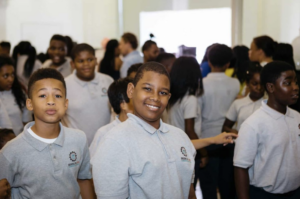Maximize Ed to Fulfill Every Student Need
By Patrick Riccards
Don’t believe that K-12 online learning can make a difference? Just take a look at Chicago Public Schools, where 4,000 students have taken online courses. According to The Chicago Tribune, CPS has made online education a centerpiece of its “credit recovery program,” using the latest technologies to keep kids in school and avoid becoming yet another dropout statistic for the Windy City.
The Tribune credits online learning with being “inexpensive, convenient and flexible,” and that is all true. Such adjectives sell online learning short. Programs like Chicago’s work because they recognize that not all students learn in the same ways. Today’s students need multimedia and they shouldn’t be forced to unplug when they enter a classroom. They need rich relevance, where they are allowed to take specific courses related to their interests and their goals (even if 23 other students don’t want to take the same course at the same time). And yes, they need learning opportunities that are both convenient and flexible, both to a student’s schedule and learning style.
The defenders of the status quo will continue to criticize such an approach by saying: online learning is untested and too new; it denies students the social aspects of school; some teachers and courses may not be of high enough quality.
But can’t the same be said of struggling public schools? Their ongoing programs have been ineffective in improving student performance. The social aspects of our drop-out factories aren’t exactly the stuff about which Harvard Business School case studies are written. It doesn’t take a Vegas oddsmaker to tell you that some teachers and courses in our low-performing schools may not be of sufficient quality, despite the best of intentions.
Chicago Public Schools is using virtual education smartly, supplementing existing classroom instruction, providing specific interventions to the students who need them, and engaging students who otherwise would consider checking out without a diploma. It is a blended instructional model, not an all-or-nothing approach. And it seems to be working.
Instead of putting up red flags and speed bumps to online learning, we need to look closely at CPS methodology and see how to improve the process overall.
No, we don’t have all the answers … yet. But if we allow programs like CPS’ online credit recovery process to continue, if we build off of Florida’s requirement that every school district must offer online options, and if we follow Alabama and require every student to take at least one online course for graduation, we are on the right path. Online learning is a key component to 21st century school improvement. If we are serious about improving schools for all students, we need to maximize such a component, not marginalize it.





0 Comments
Leave a Comment
Your email address will not be published. All fields are required.